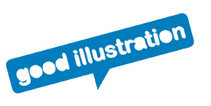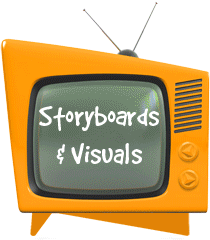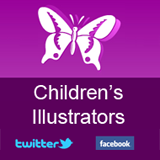Can you give us an overview on your career so far, including your current role as Senior Art Director at Little, Brown Books for Young Readers.
I started my career in book publishing designing for Cartwheel Books, the novelty imprint at Scholastic. It was a great place to learn about many different formats in children’s publishing. In addition to novelty books, Cartwheel publishes board books, early readers and picture books so I was able to get experience designing a wide range of titles.
I was lucky to work with a creative group of editors and designers where I was encouraged to experiment with formats. Novelty books were a focus of mine so I learned a great deal about book production. I created book dummies made from cloth, board and other combinations of materials. It was an education for me seeing each project through from prototype to printed book. I loved working with the book production department and finding out more about the manufacturing and printing process. It always sparked new ideas for me.
My experience with novelty books is what brought me to Little, Brown Books for Young Readers. I was hired to work on their new imprint, LB-kids, which focuses on licensed properties and interactive formats. Early on, LB-kids has teamed up with innovative and creative publishing partners which sets it apart from the competition. My role as Senior Art Director grew to include overseeing our picture book list which has been an amazing and rewarding experience for me.
Little, Brown Books for Young Readers publishes a diverse list of picture books as well as hardcover and paperback fiction and nonfiction. In addition to this, there are two other imprints- LB Kids (novelty and brand/licensed tie-ins) and Poppy (paperback original series for teen girls). What is your involvement with regards to all three imprints?
I currently oversee the picture book list at LBYR and the novelty imprint, LB-kids. I think I have the best of both worlds in that I am able to work on such outstanding picture books with such fine artists and still have my hand in novelty publishing which I have a passion for.
Part of the challenge of novelty publishing is making sure that the interactive components of the book are meaningful to the text or the theme of the book. Oftentimes, this thinking influences how we conceptualize our picture books. We’ve had picture books that have included gatefolds and/or die-cuts and other add-ons. These special effects are usually reserved for novelty books but if the content suggests it, we’re not afraid to rethink the packaging of our picture books.
We have an amazing team of editors, designers and production managers who love children’s books and go the extra mile to make each book we publish something unique and special.
Tell us about a project you are particularly proud of including how you came to select the illustrator in question.
I’m really excited about a picture book we have coming out, written and illustrated by Bob Staake called, Look! A Book! Selecting Bob to illustrate it was a no-brainer since it grew out of the work he had done on previous titles for us.
Bob had done 2 pop-up books for our LB-kids list, one featured cool vehicles, Trucks Go Pop! and the other, a wild menagerie of animals in Pets Go Pop! His artwork is always so inventive and animated, and it was amazing to see it come to life in this dimensional way. Both books included an over sized poster that pictured a world filled with wacky detail as only Bob could imagine.
We started to imagine a picture book that would mimic the detailed worlds that Bob portrayed in the posters and we played around with some sample layouts. We shared the idea with Bob and he took off with it. We continued to experiment with this book idea together and we created die-cut pages with Bob’s rhyming text that gave the reader a glimpse of a few details of the art below. This format set up a fun seek and find experience for the reader and soon we were off and running with it. It was a wonderful collaboration between the author/illustrator, and our editorial and design team. Bob created a sketch dummy for this new format that blew us all away. And it just got better and better as he went to final art.
I was thrilled to see Bob’s work evolve from a poster in a pop-up book to an innovative picture book. I think this unique way of working with an artist is what helps to set us apart from other houses.
Do you prefer to build long-term relationships with established illustrators, or are you committed to seeking out new, emerging talent?
I don’t think you can have one without the other. Building long-term relationships with established illustrators takes time and care. Hopefully those relationships grow over time and come from a place of mutual respect.
One of the benefits of building those long-term relationships is watching an established illustrator take a risk and try something new with their work. I think the best illustrators are always challenging themselves as they continue to grow in new directions.
At the same time, I love to meet with young illustrators and help to guide them in their career. We are committed to seeking out new, emerging talent at LBYR. Our designers and editors meet regularly with artists and agents. We love to share artist samples and contacts and we often attend student shows looking for new talent. There’s no better feeling than offering a young artist a contract for their first book or jacket art.
In your career so far, what has been your biggest success and greatest challenge?
The last few years have been challenging for picture books. We took steps at LBYR to rethink our picture book list by making it more focused and select. The number of picture books that we publish is smaller now but the attention we give to each one is greater. We continue to have off-site meetings to discuss trends, strategies and goals for our list. I think we faced this challenge in the marketplace head on and came up with a game plan that has worked for us.
This initiative was something that we all took part in and I’m happy to say that we’ve had some great successes this past year with our picture books. I attribute this to our collective efforts and the collaborative spirit within our group. It’s something I am happy to be part of.
Which industry networking events do you attend and what do you gain from them?
BEA (Book Expo America) is a huge event that allows you to get a snapshot of what’s happening in book publishing at a given moment. The Licensing and Stationery shows offer opportunities to meet new artists that might not have worked in books but have done amazing work for other industries. They are good places to find new talent.
I’ve also attended ALA (American Library Association) conferences and sat in on discussions that feature picture books. These meetings give insight to what other publishers are focusing on and what books resonate with the librarian community.
Attending events sponsored by SCBWI (Society of Children’s Book Writers and Illustrators) is something I try to do every year. I have a lot of respect for the organization and I believe in their mission. Speaking at conferences and doing portfolio reviews is a way to meet new picture book artists and help give them some guidance as they develop in their career.
Who or what has inspired you lately?
That’s tough to say, I get inspired by so many different things, I think the key is to remain open-minded so that the inspiration can find you. I get ideas watching films, browsing through books and magazines, and getting lost in museums. Lately, I get inspired shopping in stores that carry notions and trimmings for the fashion industry. You’d be surprised at the fun touch and feel samples you can find for your next book project.
As far as illustrators go, I’m inspired by artists that have found a way to blend traditional media with digital media. There was a time when computer generated images had a cold, mechanical look. Now I see more artists scanning in their sketches or line art and painting them in the computer or some combination of the two. It’s getting harder to distinguish what’s digital art these days. I think more people are using the computer as another tool in their repertoire and that’s great to see.
From an illustration point-of-view, what key ingredients make a great children’s book?
No doubt, a strong character who emotionally connects with the reader is one of the key ingredients. Taking that character and creating a believable world with your pictures is also important. Once you create that visual world, there are still many questions to ask yourself. How do you pace the story? What do you choose to include in each picture? Sometimes what you don’t show is as important as what you do show.
Ideally, you want the reader to connect with your pictures and be transported to another place. A great picture book unlocks the reader’s imagination and can have many different layers to it. A good one invites the reader to revisit it over and over again.
What three things would you want an illustrator reading this interview to know about Little, Brown and Company before they approached you with their work?
First off, Little, Brown is a place that respects the creative process. Secondly, our team is passionate and committed to quality. And thirdly, you should know that we love making great books!
What can we expect to see from Little, Brown Books for Young Readers over the coming months?
We have some fantastic picture books coming out in the the next few months. Peter Brown has a new book called Children Make Terrible Pets. It’s a hilarious story about a bear named Lucy who brings home a “pet” boy she names Squeaker. Peter’s art, as always, is amazing!
Dave the Potter is a picture book by Laban Carrick Hill that is illustrated by Bryan Collier. It’s an inspiring true story of a slave who was a potter and a poet in the 1800s. Bryan’s paintings are so rich with texture and emotion. He’s done an incredible job bringing this story to life.
On the LB-kids front we have a pop-up book from Matthew Reinhart titled, DC Super Heroes: The Ultimate Pop-Up Book. Matthew’s pop-ups are amazing enough, it even has a light up bat signal in it!
This interview has been syndicated courtesy of Childrensillustrators.com







